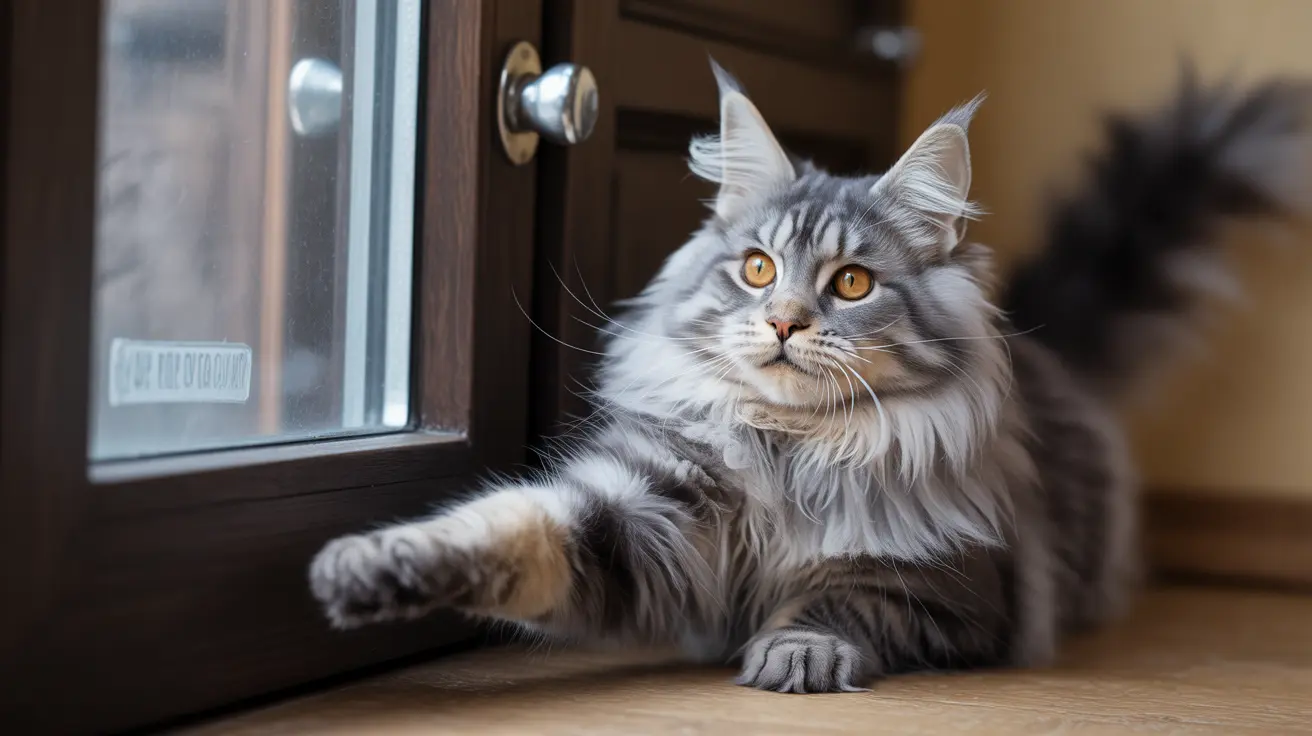The Territorial Nature of Cats
At their core, cats are territorial creatures whose survival instincts drive them to maintain control over their environment. A closed door represents an artificial boundary that disrupts their natural patrolling behavior and ability to monitor their territory effectively.
Research shows that cats view their home as a unified space, and any barrier that prevents free movement can trigger stress and anxiety. This territorial imperative is deeply rooted in their evolutionary history as both predator and prey species.
Curiosity and FOMO in Felines
Cats possess an innate curiosity that makes them natural explorers. When faced with a closed door, they experience what we might call "Fear of Missing Out" (FOMO). The simple act of closing a door immediately heightens their interest in what might be happening on the other side.
This curiosity isn't just about exploration – it's a survival mechanism that helps cats stay aware of potential threats or opportunities in their environment. When a door blocks their ability to investigate, it can trigger persistent attempts to gain access.
The Social and Emotional Impact
Contrary to popular belief, cats are social creatures with strong attachments to their human family members. A closed door can represent separation from their preferred companions, leading to feelings of isolation or anxiety.
Studies have shown that many cats actually prefer human interaction over food or toys, making access to their people a crucial aspect of their emotional well-being. When doors prevent this access, it can cause significant distress.
Resource Access and Control
Closed doors may block access to essential resources such as food, water, litter boxes, or favorite resting spots. Even if these resources are readily available elsewhere, cats prefer to maintain options and escape routes – a closed door eliminates these choices.
This loss of control over resource access can trigger stress responses and lead to increased door-focused behaviors like scratching, pawing, or vocal protests.
Common Behavioral Responses
When confronted with closed doors, cats typically display several characteristic behaviors:
- Persistent meowing or yowling
- Pawing or scratching at the door
- Sitting and staring at the door
- Attempting to open the door by jumping at handles
- Reaching under the door with their paws
How to Help Your Cat Cope
While it's not always possible to keep every door open, there are several strategies to help your cat adjust:
- Establish consistent routines for when certain doors must be closed
- Provide alternative enrichment activities and spaces
- Create positive associations with closed doors through treats and play
- Ensure multiple access points to essential resources
- Consider installing cat doors where appropriate
Frequently Asked Questions
Why do cats get anxious or upset when doors are closed?
Cats become anxious around closed doors because they disrupt their natural territorial behavior and limit their ability to monitor their environment. This anxiety stems from their instinctive need for control and access to resources.
How does a closed door affect a cat's sense of territory and control?
Closed doors fragment a cat's perceived territory and prevent them from patrolling and monitoring their space effectively. This disruption can cause stress as it conflicts with their natural instinct to maintain awareness of their entire territory.
Can closed doors trigger separation anxiety in cats?
Yes, closed doors can trigger separation anxiety, particularly if they prevent access to preferred human companions. Cats form strong social bonds and can become distressed when physical barriers separate them from their family members.
What are common behaviors cats show when they dislike closed doors?
Common behaviors include meowing, pawing at the door, scratching, reaching under the door with their paws, and attempting to manipulate door handles. Some cats may also display signs of stress like pacing or excessive vocalization.
How can I help my cat adjust to closed doors without stress?
Help your cat adjust by maintaining consistent routines, providing alternative enrichment activities, ensuring multiple resource access points, and creating positive associations with closed doors through rewards and training.
Conclusion
Understanding why cats hate closed doors involves recognizing their complex territorial, social, and emotional needs. While this behavior can be frustrating for owners, it's a natural response rooted in their instincts and evolutionary history. By implementing thoughtful solutions and maintaining consistency in our approaches, we can help our feline friends feel more secure and comfortable with necessary boundaries in their environment.






